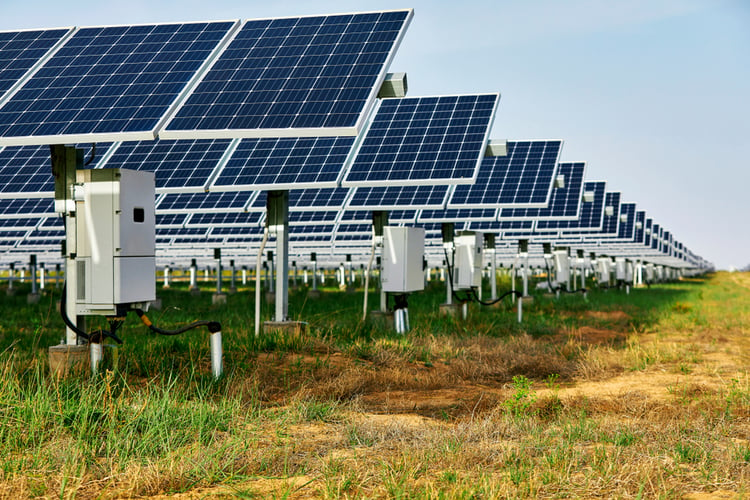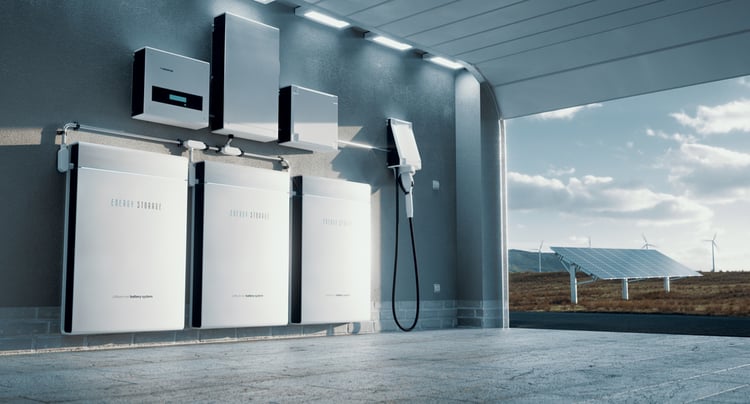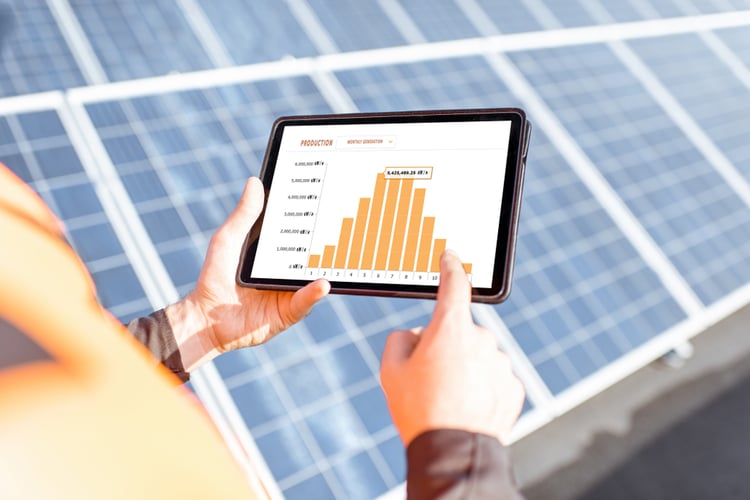Solar Inverters: Types and Features in 2023 - Explained

Solar panels are the most visible and recognizable part of a solar power system. However, inverters are equally important, since they convert DC power from solar panels into the AC power used by electrical devices. Inverters also synchronize with the local grid, so the building can use electricity from solar panels and the grid at the same time.
Reduce your building's energy bills and emissions with solar power.
Inverters are sized slightly smaller than solar panel arrays, and this design decision has an economic reason. Solar panels reach peak output for brief periods around noon, and they generate partial power the rest of the day. If an inverter is sized according to the peak wattage of solar panels, part of its capacity will be wasted. For example, you may find a 60-kW solar array with a 50-kW inverter.
- The difference between the solar array wattage and the inverter capacity is called the DC/AC ratio or Inverter Load Ratio (ILR).
- If you have 133 kW of solar panels and a 100 kW inverter, the DC/AC ratio is 1.33.
In this blog post, we will describe the main types of solar inverters and their performance features.
Types of Solar Inverters

String inverters are the most common type, and they get their name because solar panels are wired together in “string circuits” and then connected to the inverter. Generally, inverters of higher capacity have a larger number of string circuits. For example, a 10-kW inverter may have 2 or 3 circuits, while a 60-kW inverter may have 12.
Microinverters are small devices that are connected directly to solar panels, instead of wiring them to a central inverter with string circuits. Microinverters can achieve a higher efficiency, since the electricity production of each solar panel is controlled individually. However, you need one inverter per panel, which makes the installation more expensive and labor-intensive. The maintenance needs of these systems are also more complex - if you have 300 solar panels, you also have 300 microinverters.
String inverters with power optimizers combine both of the concepts described above. Solar panels are connected in string circuits and wired to a central inverter, but they also have individual power optimizers - DC-to-DC converters that regulate voltage and current, to maximize the power delivered by each panel.
What Is a Hybrid Inverter?

Solar inverters are only designed to handle power flow in one direction: from solar panels to the building, while sending surplus electricity to the grid.
However, many solar installations are now equipped with battery systems, and their operation becomes more complex. Electricity can now move in multiple directions, and the following are some examples:
- From solar panels to the building
- From solar panels to batteries
- From solar panels to the power grid
- From batteries to the building
- From batteries to the power grid
- Simultaneously from solar panels and batteries to the building
A traditional string inverter is not designed to manage all these power flows - you need a hybrid inverter to use solar power with energy storage. Solar panels are connected normally in string circuits when using a hybrid inverter, and some models are compatible with power optimizers.
Hybrid inverters normally come with built-in monitoring tools, which provide a clear picture of how the system is performing. For example, you can check how much solar electricity is being consumed by the building, stored in the battery system, and exported to the grid.
Understanding MPPT - Maximum Power Point Tracking

Solar panels deliver more power when they operate at the optimal voltage and current. However, their operating conditions are constantly changing, since sunlight varies throughout the day and the weather is constantly changing. This means the optimal voltage and current are not constant.
An MPPT is an electronic device similar to a power optimizer, which increases the productivity of solar panels. However, instead of optimizing an individual module, an MPPT circuit optimizes an entire string of modules. MPPT circuits are also part of the inverter, and not installed separately like power optimizers.
Solar arrays are often split into groups of panels to take advantage of the roof area available. However, this also means that solar panel groups will have different orientations and operating conditions. Ideally, solar panels with similar conditions should be wired together in the same string, and they should be optimized by the same MPPT circuit.
Conclusion
Inverters are just as important as solar panels, since they convert their DC power into a usable form, while optimizing their electricity output. Hybrid inverters are very useful if you plan to add energy storage, since they can control solar panels and batteries simultaneously without external devices. If you want to install solar panels and are considering batteries in the future, the best option is using hybrid inverters from the start - this will save you a replacement later.

Michael Tobias
Michael Tobias, the Founding Principal of NY Engineers, currently leads a team of 150+ MEP/FP engineers and has led over 4,000 projects in the US
Join 15,000+ Fellow Architects and Contractors
Get expert engineering tips straight to your inbox. Subscribe to the NY Engineers Blog below.

